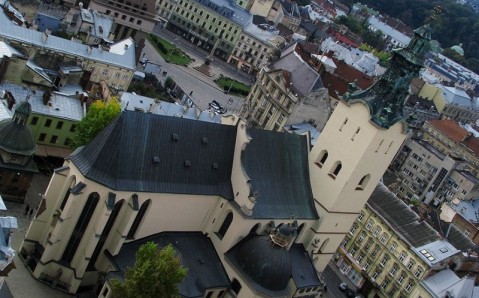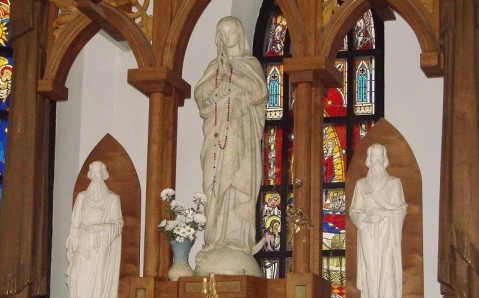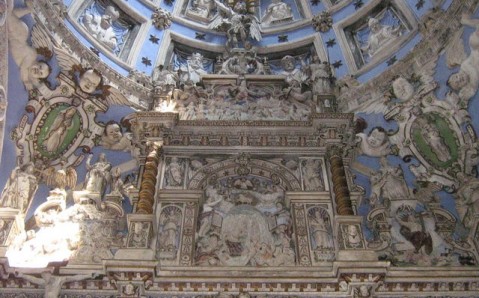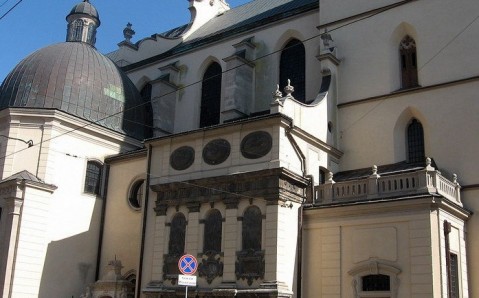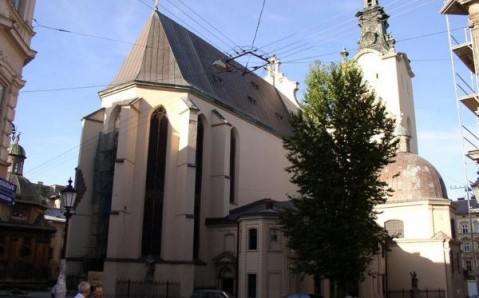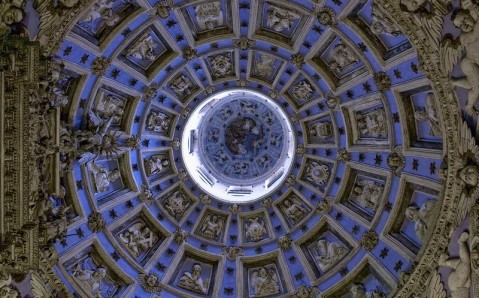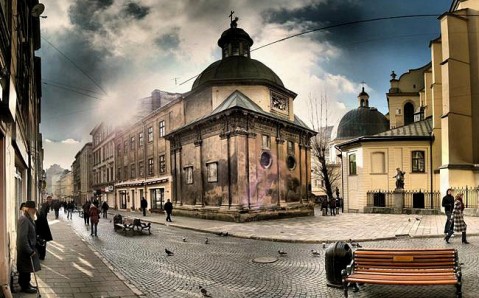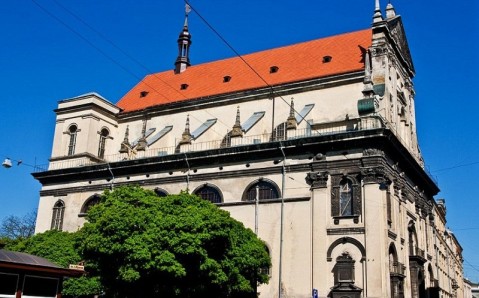The Cathedral of the Assumption of the Virgin Mary (Latin Cathedral)
The beautiful Latin Cathedral, standing majestically in the heart of Lviv’s old town is the most impressive and (literally) the most prominent building in town. The tower’s 67-meter (220 feet) high spire gets the attention of each person who enters the historical center. The Roman Catholic Church, which is almost seven centuries old, remains the most important temple in Lviv and the only one in the town that has preserved its initial Gothic look until today.
The cathedral’s construction began in the middle of the 14th century, lasting over a hundred years. The famous architect Petr Shtekher was charged with designing the church, and Polish king Casimir the Great laid the foundation’s first stone. According to the blueprint, the temple should have had two towers; however, one of them remained unfinished, making the building look asymmetrical.
In medieval Lviv, the Latin Cathedral was considered to be the second most important building after the Town Hall. It was the spiritual center of the town, was the site of important state decrees, and the keeper of war spoils. In the 17th century, after the Turkish besieged Lviv, one of the church’s walls was ‘decorated’ with Turkish cannonballs.
The temple’s appearance changed drastically over the centuries. The biggest restoration was undeertaked at the end of the 18th century: the temple’s exterior was changed considerably, acquiring late baroque and rococo decorations. And in 1772, protesting against Austrian occupation, the local residents bricked up the front entrance to the temple.
On top of this, during restoration, many chapels that have surrounded the Cathedral since its foundation were torn down. Just eight of them remain until today. The most notable of them are: the Kampian Chapel, a recognized masterpiece of the Renaissance architecture, and the Boimian Chapel.
The church’s interior was also changed. In particular, many Gothic and Renaissance altars were either demolished or replaced with baroque ones. Fortunately, the memorial sculptures and frescos that cover walls and arches of the cathedral remained intact. Even today, the interior decoration of the temple strikes with its beauty and exceptional splendor.
In 2001, Pope John Paul II visited Lviv’s main shrine. To honor his visit, a plaque was placed on one of the church’s wall.

 Western
Western
